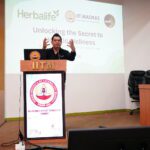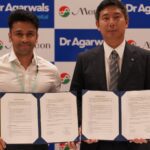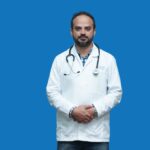“India witnesses about 1.8 million stroke cases every year”
New Delhi, June 22, 2018:
Stroke can hit anyone irrespective of their age. While effective treatment for stroke is evolving in the country, a largely neglected area is the ‘golden period’ of post-stroke rehabilitation. As per estimates, there are more than 1.8 million stroke cases every year in India. Of these, about 15% percent affect people in their 30s and 40s. There is a need to create awareness on the fact that the first 90 days, also called the ‘Golden Period’, in post-stroke rehabilitation are vital.
Stroke or a Cerebro Vascular Accident (CVA) results from a sudden blood loss to the brain or bleeding within the brain resulting in the impairment of neurological function. Obesity, smoking, hypertension, alcohol consumption, diabetes and family history are considered some of the common factors leading to a stroke.
Speaking about this, Padma Shri Awardee, Dr K K Aggarwal, President, Heart Care Foundation of India (HCFI) and Vice President CMAAO, said, “Anyone with a suspected stroke or ‘brain attack’ must be shifted to the hospital at the earliest and given a clot dissolving therapy. About 85% of strokes are ischemic in nature. Some common risk factors for stroke in the country include hypertension, diabetes, smoking, and dyslipidemia. These are further insufficiently controlled due to low awareness levels about the disease. Another major challenge in this direction is that treatment for stroke is still evolving in our country.
The acronym FAST can be used to recognize the warning signs of stroke: face drooping, arm weakness, speech difficulty, and time to emergency which is first 4.5 hours for the drug treatment and 0-24 hours for the brain vessel intervention.
The disabilities caused due to a stroke can be temporary or permanent, depending on how long the brain lacks blood flow and which part is affected.”
Some symptoms of a stroke include sudden numbness or weakness of the face, arm or leg (especially on one side of the body); confusion, trouble speaking, or understanding speech; trouble seeing in one or both eyes; trouble walking, dizziness, loss of balance or coordination; and severe headache with no known cause.
Adding further, Dr Vinit Suri Sr Stroke Specialist said, “Stroke is one of major public health concerns worldwide, with the burden in India increasing at an alarming rate over the past few decades. There is an urgent need to address this condition and this can only be done through more effective public education among all demographic groups.”
Some tips from HCFI
About 90% of strokes are associated with 10 risks factors that are modifiable.
- Control high blood pressure
- Do moderate exercise 5 times a week
- Eat a healthy balanced diet high in fruits and vegetables and low in sodium
- Reduce your cholesterol
- Maintain a healthy BMI or waist-to-hip ratio
- Stop smoking and avoid second hand exposure
- Reduce alcohol intake
- Identify and treat atrial fibrillation
- Reduce your risk from diabetes talk to your doctor
- Get educated about stroke







